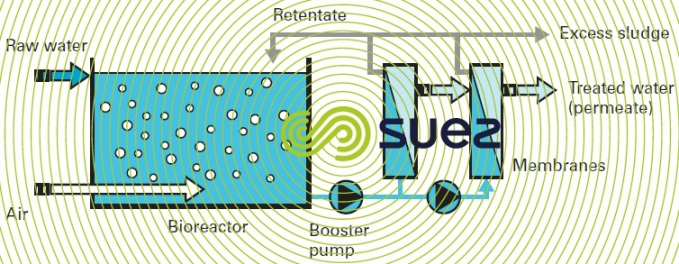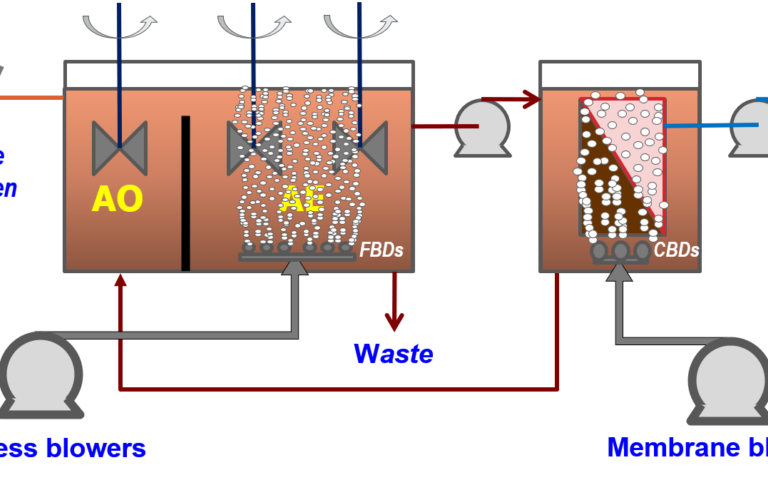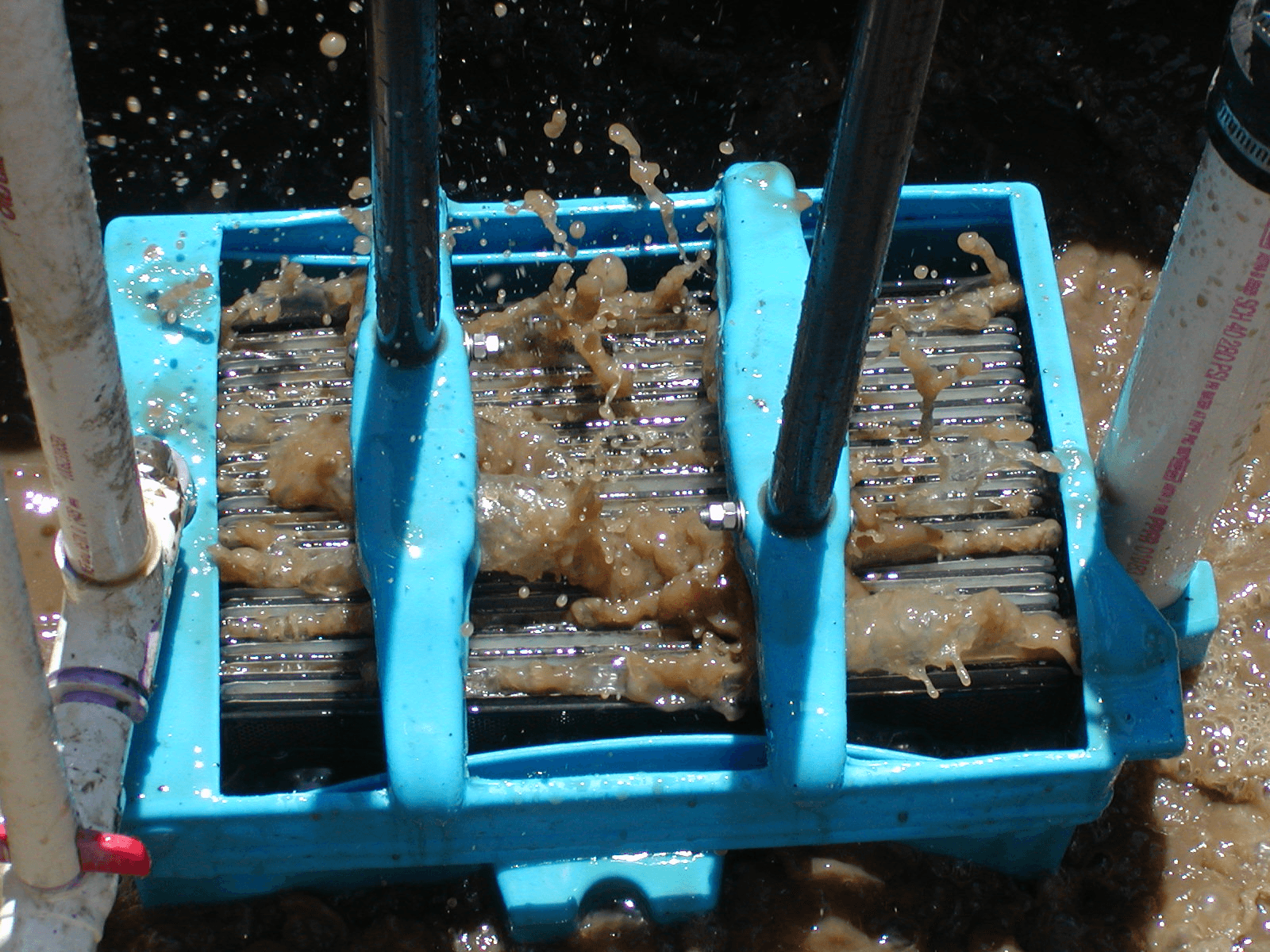How Membrane Bioreactor Technology Is Revolutionizing Wastewater Treatment
Wiki Article
Just How Membrane Bioreactors Are Transforming Water Purification Equipments
The emergence of membrane bioreactors (MBRs) stands for a substantial improvement in the area of water purification, combining biological therapy processes with innovative membrane layer filtering innovations. This assimilation not just enhances the top quality of dealt with effluent however additionally addresses metropolitan space constraints, making MBRs especially ideal for densely inhabited areas. As worldwide water deficiency heightens, the duty of MBRs in facilitating drinkable water reuse and sustainable water administration ends up being significantly important. Yet, the effects of this innovation expand past performance-- what challenges and opportunities lie in advance for its extensive execution?Summary of Membrane Bioreactors
Membrane bioreactors (MBRs) represent a considerable development in water purification modern technology, as they combine biological treatment processes with membrane layer filtration. This assimilation enhances the effectiveness of wastewater therapy by utilizing microbes to deteriorate organic contaminants while simultaneously employing semi-permeable membranes to separate cured water from suspended solids and pathogens.The MBR system normally contains an organic reactor where the microbial populace metabolizes contaminants, followed by a membrane filtering device that keeps biomass and enables just clean water to travel through. This double performance causes greater effluent top quality compared to conventional therapy methods. MBRs can be run in both batch and continual flow settings, offering flexibility in layout and application.
They also enable the healing of water for reuse, thus adding to water sustainability efforts. In general, MBRs are at the leading edge of enhancing water treatment performance and top quality, showcasing the possibility for ingenious services in environmental management.
Benefits of MBR Technology
The combination of organic therapy with membrane purification offers many benefits for water purification processes. Among the main advantages of Membrane layer Bioreactor (MBR) technology is its ability to properly get rid of both organic and not natural impurities, resulting in top quality effluent. The membranes work as a physical obstacle, avoiding suspended solids and microorganisms from travelling through, which boosts the general safety and integrity of treated water.Additionally, MBR systems require a smaller sized footprint compared to conventional treatment methods, enabling for a lot more reliable room usage. This small layout is especially advantageous in metropolitan setups where land is restricted. MBRs also demonstrate functional flexibility, accommodating differing influent high qualities and circulation prices without considerable efficiency deterioration.
In addition, the procedure provides enhanced nutrient removal capabilities, specifically for nitrogen and phosphorus, which are essential for protecting against eutrophication in receiving waters. The minimized sludge production related to MBR modern technology likewise converts to reduce disposal costs, making it a cost-efficient service in the future - Membrane Bioreactor. On the whole, the advantages of MBR modern technology setting it as a leading choice for innovative and sustainable water purification systems, addressing both environmental and economic problems
Applications in Water Filtration
Applications of Membrane Bioreactor (MBR) innovation in water filtration are impactful and diverse, attending to various therapy requires throughout numerous sectors. MBRs successfully incorporate biological therapy procedures with membrane layer purification, making them optimal for community wastewater treatment, commercial effluent administration, and even drinkable water reuse initiatives.In metropolitan settings, MBRs are significantly utilized to boost the high quality of dealt with wastewater, permitting for compliance with rigorous discharge regulations and assisting in the recycling of water for watering and non-potable usages. Their small design additionally makes them appropriate for urban settings where space is restricted.
Industrially, MBR innovation is utilized to deal with process water and wastewater, specifically in industries such as food and drink, drugs, and fabrics. By efficiently removing impurities and suspended solids, MBRs help sectors reduce environmental influences while recuperating valuable resources from useful source wastewater streams.
Additionally, MBRs are getting traction in decentralized water treatment applications, where small systems can be deployed in remote locations or developing regions. This flexibility makes it possible for neighborhoods to achieve lasting water management solutions, boosting access to tidy water while reducing reliance on standard treatment approaches.
Study and Success Stories

In another example, a fabric production facility in Bangladesh took on MBR modern technology to address its wastewater challenges. The system lowered chemical oxygen need (COD) degrees from 1,200 mg/L to less than 100 mg/L, hence meeting regulative standards and considerably minimizing environmental impact.
The College of Cape Community's MBR setup has confirmed effective in treating greywater for non-potable reuse on campus. This project not just preserves drinkable water yet additionally offers as an educational model for lasting methods.
In addition, a seafood handling plant in Norway utilized MBR innovation to treat effluents consisting of high levels of organic issue, accomplishing over 90% toxin elimination. These instance researches highlight MBR innovation's versatility and its essential duty in boosting water high quality throughout diverse applications.
Future of Water Therapy Solutions
As global water deficiency and contamination see here now obstacles magnify, innovative water treatment solutions are ending up being increasingly important to guarantee lasting access to tidy water. The future of water therapy exists in the assimilation of advanced modern technologies that improve the efficiency and effectiveness of filtration processes. Membrane bioreactors (MBRs) go to the center of this development, combining organic treatment with membrane filtering to produce high-grade effluent appropriate for different applications.
Emerging patterns such as source recuperation from wastewater, consisting of nutrients and power, will certainly even more change therapy facilities into environmentally friendly centers. Improvements in nanotechnology and membrane products assure boosted efficiency and durability of filtration systems.

Final Thought
Finally, membrane bioreactors stand for a substantial development in water purification modern technologies, properly incorporating organic therapy with sophisticated membrane filtration. The various advantages, consisting of enhanced effluent quality and reduced spatial needs, make MBRs particularly ideal for city applications. Their duty in potable water reuse and lasting water management highlights their importance in resolving worldwide water shortage challenges. Continued research study and growth will further boost the efficacy and adoption of MBR innovation, ensuring a durable future for water treatment remedies.The emergence of membrane bioreactors (MBRs) stands for a significant innovation in the area of water filtration, merging biological therapy processes with advanced membrane purification modern technologies. As global water scarcity intensifies, the duty of MBRs in promoting potable water reuse and lasting water monitoring comes to be significantly important. They likewise allow the recovery of water for reuse, thus adding to water sustainability initiatives.As global water shortage and air pollution obstacles magnify, innovative water treatment options are becoming progressively necessary to guarantee sustainable access to clean water. Their function in drinkable water reuse and lasting water management highlights their significance in dealing with global water shortage difficulties.
Report this wiki page